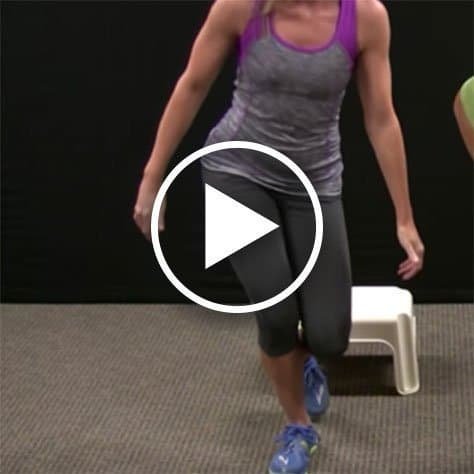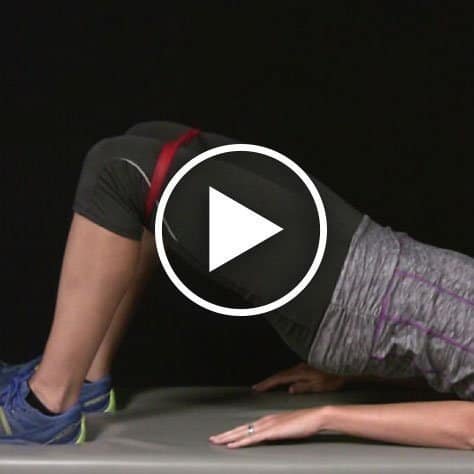Two Hip Pain Mistakes All Chiropractors Must Avoid
Reading time: 3 minutes
“Gluteal tendinopathy is one of the most common lower limb tendinopathies presenting to general practice, affecting approximately 10%–25% of the population.” - BMJ Open April 2021
A recent BMJ study (59) compared three different gluteal tendinopathy management strategies to define clinical outcomes for each.
% Reporting moderate - very much improvement
🙁 Wait and see: 52%
🙁 Ultrasound-guided corticosteroid injection: 58%
😄 Education plus exercise: 78%
Problems
An April 2021 follow-up study by the BMJ authors revealed an even more telling story. Patients felt disappointed and disenfranchised when they did not receive two things:
1. Definitive Diagnosis
BMJ: “Participants emphasized the importance of having been provided a definitive diagnosis after being clinical examined. [One representative patient statement was]: ‘It was really quite a relief to see, that, yes, there is something wrong with it and I’m not just, making it up’ “ (58)
2. Appropriate Active Care
BMJ: “Participants almost always felt disenfranchised, disappointed or frustrated by being allocated to a wait-and-see approach rather than education plus exercise… [patient statements included] ‘I would rather feel like something was being done, rather than sort of, sitting back and feeling like nothing was being done,’ and ‘hoping I would be in a more proactive group.’ “(58)
Solutions
What Can We Learn?
While this study focused on gluteal tendinopathy, evidence-based chiropractors can apply two lessons to almost any MSK management:
1. Provide a Definitive Diagnosis
An educated patient is an empowered patient (who is also much more likely to comply with your care plan). Ensure that your report of findings consistently delivers clear answers to:
What’s wrong with me?
What can you do to help?
How long will this take?
2. Deliver Appropriate Active Care
Lesson two is that patients want to play an active role in their recovery. So, ensure that you’re providing appropriate recommendations for their often unspoken question:
What will I need to do?
Oh, and one more thing I almost missed—don’t forget that people forget stuff. Patients rarely remember everything you tell them about their exercises, what activities they’re supposed to avoid, how many treatments will be necessary, or even their diagnosis. So, stay a step ahead by consistently providing a written outline of these compliance, satisfaction, and outcome killers.
There’s a Vast Difference Between Treating Someone and Consistently Applying Best Practices
The foundation of appropriate care is staying up-to-date with the best practice assessment and management for each condition. Fortunately, you’ve got a clinical partner who can help with that. We hope you’ll enjoy this updated version of our Top 10 Tips for Hips: Assessment & Management of Gluteal Tendinopathy
Clinical Question
A post-40-year old female presents with insidious-onset, persistent lateral hip pain that extends slightly into the buttock and upper lateral thigh. Symptoms are exacerbated by walking, climbing stairs or hills, standing on one leg to dress, and following prolonged sitting. Nighttime pain interferes with sleep. What is your most likely diagnosis?
Answer: Tendinopathy involving the gluteus medius or gluteus minimus is the most common cause of lateral hip pain. (1, 2) Gluteal tendon tears have been dubbed “rotator cuff tears of the hip” because of their similar prevalence, anatomy, etiology, and management. (3-5)
Here’s a quick summary of our top 10 tips for gluteal tendinopathy, including video demonstrations of the most appropriate tests, treatments, and exercises.
1. It’s Not Bursitis
While the greater trochanteric bursa was once a focal point for lateral hip pain, current thought deemphasizes the concept of “bursitis.” Evidence now suggests that true “bursitis” is rare, and if present, generally occurs secondary to another underlying dysfunction, like gluteal tendinopathy. (6, 7)
2. Compression/Ischemia
Gluteal tendinopathy (GT) develops from a combination of excessive tension or compression. (12) Similar to rotator cuff tendinopathy, the primary trigger for gluteus medius tendinopathy seems to be compression of the undersurface of the tendon – as most tears begin in this region. (12) Long-term compressive loads lead to a predictable continuum of ischemia, failed healing, matrix degradation, diminished load-bearing capacity, and failure. (12, 13)
3. Palpation
Clinical evaluation will demonstrate tenderness to palpation over the greater trochanter. Lack of tenderness over the greater trochanter suggests an alternate diagnosis. (23)
4. Orthopedic Assessment
The following tests show high sensitivity & specificity (>90%) for gluteal tendinopathy.
5. Predisposing Functional Deficits
Patients with gluteal tendinopathy may demonstrate frontal plane movement imbalances. (6, 29) Hip abductor weakness is the most common muscle imbalance disorder in GT patients. Functional orthopedic testing for hip abductor weakness would include the Trendelenburg sign, overhead squat test, and single-leg squat test.
6. ADL Advice
ADL recommendations should include advising patients to:
Avoid “hanging on one hip” and sitting or standing with their knees crossed.
Avoid prolonged periods of sitting, particularly on low-height seats.
Keep their knees spread (like sitting on a horse) to ease the tension when transitioning in and out of a chair.
Avoid side-lying sleep postures, as this triggers ipsilateral bed-side compression and contralateral traction-induced compression from thigh adduction. Placing a pillow between the knees can minimize excessive adduction traction.
Sleep in a ¾ prone position or use a memory foam or egg-shell mattress toppers to reduce bed-side compression.
When walking, patients should land softly on the front of their heels and take shorter, quicker steps to avoid “over-striding.”
7. Isometric “Analgesics”
“Sustained, low-intensity isometric contractions may provide analgesic benefit for tendinopathy patients.” (38, 39) While there is no standard isometric exercise protocol for gluteal tendinopathy, a patellar tendinopathy protocol has demonstrated high success by performing four, 45-second contractions held at 70% maximum (MVC), repeated multiple times per day. (40, 41) Here’s an isometric option for the gluteal muscles:
8. Eccentric Rehab
Once the patient can tolerate isometric tensile loading, they may progress to eccentric exercises with low repetitions of moderate effort. (34) Clinicians may use “change in nighttime pain” as a gauge for advancing or retreating exercise intensity. (34)
9. Hip Abductor Strengthening
Gluteus medius rehab might include a combination of the following:
10. Modalities & Manual Therapy
As with other degenerative tendinopathies, clinicians should employ treatments that initiate a controlled inflammatory response and trigger healing, including IASTM, therapeutic taping, soft tissue manipulation, myofascial release, dry needling, and extracorporeal shockwave therapy (ESWT).
ChiroUp subscribers can access the complete Gluteal Tendinopathy protocol (and tutorial videos) anytime in the My Clinical Skills tab in your ChiroUp account.
Are you ready to implement these tips into your treatment and patient education? Consider ChiroUp your “easy button” to do just that. Now, with 100+ condition protocols & seamless patient education for each of our conditions, improving your clinical outcomes is just a click away.
See for yourself what all the hype is about & get started with your free ChiroUp trial, today!
-
Bancroft LW, Blankenbaker DG. Imaging of the tendons about the pelvis. AJR Am J Roentgenol. 2010;195(3):605-17.
Long SS, Surrey DE, Nazarian LN. Sonography of greater trochanteric pain syndrome and the rarity of primary bursitis. AJR Am J Roentgenol. 2013;201(5):1083-6.
Bunker TD, Esler CN, Leach WJ. Rotator-cuff tear of the hip. J Bone Joint Surg Br. 1997;79(4):618-20.
Jeanneret L, Kurmann PT, van Linthoudt D. [Rotator cuff tear of the hip]. Rev Med Suisse. 2008;4(157):1226-9.
Lachiewicz PF. Abductor tendon tears of the hip: evaluation and management. J Am Acad Orthop Surg. 2011;19(7):385-91.
Pfirrmann CW, Notzli HP, Dora C, Hodler J, Zanetti M. Abductor tendons and muscles assessed at MR imaging after total hip arthroplasty in asymptomatic and symptomatic patients. Radiology. 2005;235(3):969-76.
Woodley SJ, Nicholson HD, Livingstone V, Doyle TC, Meikle GR, Macintosh JE, et al. Lateral hip pain: findings from magnetic resonance imaging and clinical examination. J Orthop Sports Phys Ther. 2008;38(6):313-28.
Connell DA, Bass C, Sykes CA, Young D, Edwards E. Sonographic evaluation of gluteus medius and minimus tendinopathy. Eur Radiol. 2003;13(6):1339-47.
Silva F, Adams T, Feinstein J, Arroyo RA. Trochanteric bursitis: refuting the myth of inflammation. J Clin Rheumatol. 2008;14(2):82-6.
Beck M, Sledge JB, Gautier E, Dora CF, Ganz R. The anatomy and function of the gluteus minimus muscle. J Bone Joint Surg Br. 2000;82(3):358-63.
Tsutsumi M, Nimura A, Akita K. The Gluteus Medius Tendon and Its Insertion Sites: An Anatomical Study with Possible Implications for Gluteus Medius Tears. J Bone Joint Surg Am. 2019;101(2):177-84.
Almekinders LC, Weinhold PS, Maffulli N. Compression etiology in tendinopathy. Clin Sports Med. 2003;22(4):703-10.
Grimaldi A, Fearon A. Gluteal Tendinopathy: Integrating Pathomechanics and Clinical Features in Its Management. J Orthop Sports Phys Ther. 2015;45(11):910-22.
Fearon AM, Scarvell JM, Neeman T, Cook JL, Cormick W, Smith PN. Greater trochanteric pain syndrome: defining the clinical syndrome. Br J Sports Med. 2013;47(10):649-53.
Iorio R, Healy WL, Warren PD, Appleby D. Lateral trochanteric pain following primary total hip arthroplasty. J Arthroplasty. 2006;21(2):233-6.
Khan KM, Cook JL, Taunton JE, Bonar F. Overuse tendinosis, not tendinitis part 1: a new paradigm for a difficult clinical problem. Phys Sportsmed. 2000;28(5):38-48.
Fearon A, Stephens S, Cook J, Smith P, Neeman T, Cormick W, et al. The relationship of femoral neck shaft angle and adiposity to greater trochanteric pain syndrome in women. A case control morphology and anthropometric study. Br J Sports Med. 2012;46(12):888-92.
Segal NA, Felson DT, Torner JC, Zhu Y, Curtis JR, Niu J, et al. Greater trochanteric pain syndrome: epidemiology and associated factors. Arch Phys Med Rehabil. 2007;88(8):988-92.
Sayegh F, Potoupnis M, Kapetanos G. Greater trochanter bursitis pain syndrome in females with chronic low back pain and sciatica. Acta Orthop Belg. 2004;70(5):423-8.
Snider R. Trochanteric bursitis. In: Essentials of
Musculoskeletal Care. American Academy of Orthopaedic Surgeons; 1997. p. 299-303.
Jennings F, Lambert E, Fredericson M. Rheumatic diseases presenting as sports-related injuries. Sports Med. 2008;38(11):917-30.
Ho GW, Howard TM. Greater trochanteric pain syndrome: more than bursitis and iliotibial tract friction. Curr Sports Med Rep. 2012;11(5):232-8.
Grimaldi A, Mellor R, Nicolson P, Hodges P, Bennell K, Vicenzino B. Utility of clinical tests to diagnose MRI-confirmed gluteal tendinopathy in patients presenting with lateral hip pain. Br J Sports Med. 2017;51(6):519-24.
Birnbaum K, Pandorf T. Finite element model of the proximal femur under consideration of the hip centralizing forces of the iliotibial tract. Clin Biomech (Bristol, Avon). 2011;26(1):58-64.
Stecco A, Antonio S, Gilliar W, Wolfgang G, Hill R, Robert H, et al. The anatomical and functional relation between gluteus maximus and fascia lata. J Bodyw Mov Ther. 2013;17(4):512-7.
Lustenberger DP, Ng VY, Best TM, Ellis TJ. Efficacy of treatment of trochanteric bursitis: a systematic review. Clin J Sport Med. 2011;21(5):447-53.
Kaltenborn A, Bourg CM, Gutzeit A, Kalberer F. The Hip Lag Sign--prospective blinded trial of a new clinical sign to predict hip abductor damage. PLoS One. 2014;9(3):e91560.
Lequesne M, Mathieu P, Vuillemin-Bodaghi V, Bard H, Djian P. Gluteal tendinopathy in refractory greater trochanter pain syndrome: diagnostic value of two clinical tests. Arthritis Rheum. 2008;59(2):241-6.
Sutter R, Kalberer F, Binkert CA, Graf N, Pfirrmann CW, Gutzeit A. Abductor tendon tears are associated with hypertrophy of the tensor fasciae latae muscle. Skeletal Radiol. 2013;42(5):627-33.
Gautam VK, Anand S. A new test for estimating iliotibial band contracture. J Bone Joint Surg Br. 1998;80(3):474-5.
Tucker J. Gluteal Tendinopathy Protocol. ChiroUp Advisory Boaod. March 1, 2019 ed2019.
McMahon SE, Smith TO, Hing CB. A systematic review of imaging modalities in the diagnosis of greater trochanteric pain syndrome. Musculoskeletal Care. 2012;10(4):232-9.
Westacott DJ, Minns JI, Foguet P. The diagnostic accuracy of magnetic resonance imaging and ultrasonography in gluteal tendon tears--a systematic review. Hip Int. 2011;21(6):637-45.
Cook JL, Purdam CR. The challenge of managing tendinopathy in competing athletes. Br J Sports Med. 2014;48(7):506-9.
Grimaldi A, Mellor R, Hodges P, Bennell K, Wajswelner H, Vicenzino B. Gluteal Tendinopathy: A Review of Mechanisms, Assessment and Management. Sports Med. 2015;45(8):1107-19.
Meardon SA, Campbell S, Derrick TR. Step width alters iliotibial band strain during running. Sports Biomech. 2012;11(4):464-72.
Rompe JD, Segal NA, Cacchio A, Furia JP, Morral A, Maffulli N. Home training, local corticosteroid injection, or radial shock wave therapy for greater trochanter pain syndrome. Am J Sports Med. 2009;37(10):1981-90.
Naugle KM, Fillingim RB, Riley JL, 3rd. A meta-analytic review of the hypoalgesic effects of exercise. J Pain. 2012;13(12):1139-50.
Philippon MJ, Maxwell RB, Johnston TL, Schenker M, Briggs KK. Clinical presentation of femoroacetabular impingement. Knee Surg Sports Traumatol Arthrosc. 2007;15(8):1041-7.
Rio E, Kidgell D, Purdam C, Gaida J, Moseley GL, Pearce AJ, et al. Isometric exercise induces analgesia and reduces inhibition in patellar tendinopathy. Br J Sports Med. 2015;49(19):1277-83.
Rudavsky A, Cook J. Physiotherapy management of patellar tendinopathy (jumper's knee). J Physiother. 2014;60(3):122-9.
Magnusson SP, Langberg H, Kjaer M. The pathogenesis of tendinopathy: balancing the response to loading. Nat Rev Rheumatol. 2010;6(5):262-8.
Moreside JM, McGill SM. Improvements in hip flexibility do not transfer to mobility in functional movement patterns. J Strength Cond Res. 2013;27(10):2635-43.
Willy RW, Davis IS. The effect of a hip-strengthening program on mechanics during running and during a single-leg squat. J Orthop Sports Phys Ther. 2011;41(9):625-32.
Bolgla LA, Uhl TL. Electromyographic analysis of hip rehabilitation exercises in a group of healthy subjects. J Orthop Sports Phys Ther. 2005;35(8):487-94.
Collee G, Dijkmans BA, Vandenbroucke JP, Cats A. Greater trochanteric pain syndrome (trochanteric bursitis) in low back pain. Scand J Rheumatol. 1991;20(4):262-6.
Howell GE, Biggs RE, Bourne RB. Prevalence of abductor mechanism tears of the hips in patients with osteoarthritis. J Arthroplasty. 2001;16(1):121-3.
Davidson CJ, Ganion LR, Gehlsen GM, Verhoestra B, Roepke JE, Sevier TL. Rat tendon morphologic and functional changes resulting from soft tissue mobilization. Med Sci Sports Exerc. 1997;29(3):313-9.
Rajasekar S, Kumar A, Patel J, Ramprasad M, Samuel AJ. Does Kinesio taping correct exaggerated dynamic knee valgus? A randomized double blinded sham-controlled trial. J Bodyw Mov Ther. 2018;22(3):727-32.
Furia JP, Rompe JD, Maffulli N. Low-energy extracorporeal shock wave therapy as a treatment for greater trochanteric pain syndrome. Am J Sports Med. 2009;37(9):1806-13.
McShane JM, Shah VN, Nazarian LN. Sonographically guided percutaneous needle tenotomy for treatment of common extensor tendinosis in the elbow: is a corticosteroid necessary? J Ultrasound Med. 2008;27(8):1137-44.
Mellor R, Bennell K, Grimaldi A, Nicolson P, Kasza J, Hodges P, et al. Education plus exercise versus corticosteroid injection use versus a wait and see approach on global outcome and pain from gluteal tendinopathy: prospective, single blinded, randomised clinical trial. Br J Sports Med. 2018;52(22):1464-72.
Jacobson JA, Rubin J, Yablon CM, Kim SM, Kalume-Brigido M, Parameswaran A. Ultrasound-Guided Fenestration of Tendons About the Hip and Pelvis: Clinical Outcomes. J Ultrasound Med. 2015;34(11):2029-35.
McShane JM, Nazarian LN, Harwood MI. Sonographically guided percutaneous needle tenotomy for treatment of common extensor tendinosis in the elbow. J Ultrasound Med. 2006;25(10):1281-9.
Unlu MC, Kivrak A, Kayaalp ME, Birsel O, Akgun I. Peritendinous injection of platelet-rich plasma to treat tendinopathy: A retrospective review. Acta Orthop Traumatol Turc. 2017;51(6):482-7.
Fitzpatrick J, Bulsara MK, O'Donnell J, Zheng MH. Leucocyte-Rich Platelet-Rich Plasma Treatment of Gluteus Medius and Minimus Tendinopathy: A Double-Blind Randomized Controlled Trial With 2-Year Follow-up. Am J Sports Med. 2019:363546519826969.
Walsh MJ, Walton JR, Walsh NA. Surgical repair of the gluteal tendons: a report of 72 cases. J Arthroplasty. 2011;26(8):1514-9.
Plinsinga ML, Mellor R, Setchell J, Ford K, Lynch L, Melrose J, Polansky C, Vicenzino B. Perspectives and experiences of people who were randomly assigned to wait-and-see approach in a gluteal tendinopathy trial: a qualitative follow-up study. BMJ open. 2021 Apr 1;11(4):e044934. Link
Mellor R, Bennell K, Grimaldi A, Nicolson P, Kasza J, Hodges P, Wajswelner H, Vicenzino B. Education plus exercise versus corticosteroid injection use versus a wait and see approach on global outcome and pain from gluteal tendinopathy: prospective, single blinded, randomised clinical trial. bmj. 2018 May 2;361. Link








